KOMAL GNDHAR
TODAY - 11 November, 2009

Mumbai on cyclone alert
A cyclone is likely to hit south Gujarat and north Maharashtra and could bring strong winds to Goa, Karnataka and Kerala. More
- World Bank chief sees risk to world growth in 2010
- Rupee to gain, but shares hold key
- Fed officials see choppy recovery for U.S. economy
- SingTel says has made no decision to list units
- GM chairman urges changes to pay caps
- Nikkei edges up, but gains capped by strong yen
- ANALYSIS - Why is Oracle fighting so hard for Sun's MySQL?
- Pay restrictions could hurt GM - chairman
- HSBC Asia CEO: no timeframe yet for Shanghai listing
| More stories in Front Page | ||||||||||||||||||||||||||||||||||||||||||||||||||||||||||||||||||||||||||||||||||||||||||||||||||||||||||||||||||||||||||||||||||||||||||||||||||||
| • Rise early to bell CAT
| ||||||||||||||||||||||||||||||||||||||||||||||||||||||||||||||||||||||||||||||||||||||||||||||||||||||||||||||||||||||||||||||||||||||||||||||||||||
Tue, Nov 10 06:20 PM
Pakistani Taliban militants vowed to fight a tough, protracted guerrilla war against the army on Tuesday as a suicide car-bomber killed up to 20 people in a northwestern town, police said.
The army went on the offensive in South Waziristan, a lawless ethnic Pashtun region on the Afghan border, on Oct. 17, aiming to root out Pakistani Taliban militants behind a wave of violence in urban areas.
The militants have responded with intensified attacks in towns and cities since the offensive was launched, killing several hundred people.
In the latest attack, a suicide bomber in a car set off explosives in a square in the centre of Charsadda, 20 km (12 miles) northeast of the city of Peshawar, killing up to 20 people and wounding at least 30, town police chief Riaz Khan said.
The Waziristan offensive is closely watched by the United States and other powers embroiled in Afghanistan, as the region's rugged landscape of barren mountains, patchy forest and hidden ravines has become a global centre of Islamist militancy.
Soldiers have been advancing into the militant heartland from three directions, capturing a string of important bases and entering the Taliban headquarters in the town of Makeen, the army said.
But Taliban spokesman Azam Tariq played down the militants' losses.
"They are capturing roads while our people are still operating in the forests and mountains," Tariq told Reuters by telephone from an undisclosed location.
"We have started guerrilla war against the Pakistani army. We've carried out several actions against the army and inflicted heavy losses on them," he said.
According to army figures, 495 militants have been killed since the offensive began while 48 soldiers have died.
There has been no independent verification of casualties as reporters and other independent observers are not allowed into the war zone except on an occasional trip with the military.
"TOUGHER THAN KASHMIR"
Asked earlier about urban attacks, most of which have been carried out by suicide bombers, Tariq said: "Whoever harms our movement will be given a lesson."
The violence has unsettled trade on Pakistan's stock market and the main index ended 1.95 percent lower at 8,762.40 on very thin turnover of 58.8 million shares.
"There was barely any interest as there is a lot of uncertainty regarding security and the political scenario," said Asad Iqbal, managing director at Ismail Iqbal Securities Ltd.
Tariq vowed a long, tough fight.
"They thought they would capture Waziristan easily but the fight in Waziristan will be tougher than in Kashmir," he said.
Indian security forces have been battling separatist guerrillas in the disputed Muslim-majority Himalayan region of Kashmir since 1989. Tens of thousands of people have been killed.
The military said on Tuesday afternoon nine militants had been killed in the previous 24 hours as soldiers cleared captured villages and secured ridges.
Soldiers found a militant jail near the captured stronghold of Ladha and destroyed some caves, bunkers and observation posts, the army said.
(Additional reporting by Kamran Haider and Augustine Anthony; Writing by Robert Birsel; Editing by Bryson Hull)
Wed, Nov 11 05:56 AM
A day after the protest by the members of the Bharatiya Kisan Union (Lakhowal), the farmers belonging to Bharatiya Kisan Union (Ekta) staged a massive protest dharna and blocked vehicular traffic in front of the Deputy Commissioner's office in Phase I here on Tuesday.
Besides farmers, a large number of government employees under the banner of the Punjab Employees' Action Committee also held massive demonstration in front of the DC office here on Tuesday.
While the farmers were protesting against the distress sale of paddy 1121 variety, the employees were up in arms against the failure of the state government in giving them benefits as per the revised pay scales and not fulfilling their other long-pending demands.
BKU (Ekta) state vice-president Mehar Singh and district president Ravinder Singh led the protesting farmers and a delegation, which gave a memorandum to the DC demanding the minimum support price of Rs 3,500 per quintal for paddy 1121 variety.
The employees' protest was led by their state convener Ranbir Singh Dhillon, who threatened to hold a massive state-level protest rally in Sector 34, Chandigarh, on November 27, if their demands were not met.
Entertainment
- Forgotten Hotties: Red hot shots of Raveena Tandon | Best of Galleries | Latest Movie Trailers | Features
- Movie of the Week: 'Tum Mile'
- 'Kurbaan' is an important movie: Saif
- Glamzone: Hot pics of Meghna Naidu
- Emraan Hashmi to shed serial kisser image
- Actor of the Decade: Is it Aamir or SRK?
- MSN Exclusive: The 'Paa' Page
Overview
User Rating:
User Comments:
A brilliant movie more (4 total)Cast
(Credited cast)| Abinash Bannerjee | ... | Bhrigu (as Abanish Banerjee) | |
| Abhi Bhattacharya | |||
| Bijon Bhattacharya | ... | Gagan | |
| Satindra Bhattacharya | ... | Shibnath | |
| Debabrata Biswas | |||
| Anil Chatterjee | ... | Rishi (as Anil Chatterji) | |
| Satyabrata Chattopadhyay | ... | Prabhat | |
| Salil Choudhury | |||
| Supriya Choudhury | ... | Ansuya (as Supriya Chowdhury) | |
| Gita Dey | ... | Shanta (as Gita De) | |
| Chitra Mandal | ... | Jaya | |
| Gyanesh Mukherjee | ... | Debu Bose | |
| Mani Srimani | ... | Speaker |
Komal Gandhar, known internationally as A Soft Note on a Sharp Scale, or in the UK as E-Flat, was introduced into the romantic drama category of Indian cinema in the year 1961. This film noire piece, set originally in the Bengali language, West Bengal, India was directed by Ritwik Ghatak.
The film Komal Gandhar portrays a maverick's vision of uniting Bengal. This dream gave birth to the Permanent Settlement Act, a number of famines, and a new popular culture by the name of Gentoo. This new culture soon fell apart on August the 15th 1947 after the harsh blow was dealt with the onslaught of the Indian partition. Although anyone disassociated with the cultures and tales of Bengal will feel out of the loop when it comes to understanding the film, the general theme of love and unity can be appreciated by all.
Throughout the film Ritwik shows his enthusiasm for optimism, but also shows that success and happiness come through treacherous paths. He shows that not only is union violent and a necessity, but it can only be reached through listening to one's heart.
This film stars Bengali actors Gyanesh Mukherjee, Bijon Bhattacharya, and Anil Chatterjee.
Komal Gandhar was produced, directed, and written by Ritwik Ghatak, edited by Ramesh Joshi, with cinematography by Dilip Rajan Mukherjee and an original soundtrack by Jyotirindra Moitra.
Note: If you know more about the content of this video , please add it as comment under this video.
http://www.indiavideo.org/cinema/komal-gandhar-bengali-films-2134.php
Ritwik Kumar Ghatak (1925-1976)
Komal Gandhar (1961)
Komal Gandhar can be described as Ritwik Ghatak's thesis-film. The film is a semi-autobiographical account of both the radical theatre movements in the 1940s and 1950s, particularly recalling Indian People's Theatre Association, an important leftist cultural platform of which Ghatak was an active member and relatively calmer Bengal in the latter half of 1950s. So unabashed it was in its candor that the film landed Ghatak in major differences with the pro-soviet Communist Party of India, from which his distance increased slowly. The dialogue that triggers off the film is from a play which is being staged within the film, describing the effects of the Partition of India: "They have other-ed my mother, my own mother". The narrative is about a couple of rival radical theatre groups, one led by Bhrigu, and the other by Shanta, of which Anasuya, the heroine of the film, is a member. Anasuya tries to bridge the groups. During the staging of a resultant joint-production of Bhrigu's version of the Sanskrit classic Shakuntala, Shanta and her cronies deliberately sabotages it. Bhrigu and Anasuya, in between productions and journeys, fall in love. Now Anasuya has to choose between Bhrigu and Samar, her fiancée who lives in Paris.
The Mother and Memories
One can start by recalling a fuzzy area of Komal Gandhar: Anasuya sees her mother's eyes in Bhrigu's and addresses him as her mother's son. The brother-sister relation is always implicit as the ideal one in Ghatak's films. Ashish Rajadhyaksha says about Ghatak's "increasingly nebulous, undefined relationships": "These relationships which negate the surface realism of theme are important because the form itself suggests a return to the realist, at least insofar as the characters and situations are in his later work much more firmly rooted in the contemporary." (Ritwik Ghatak: A Return to the Epic, Bombay: Screen Unit, 1982, p 82). But I wish to emphasize here that reading incestuous undertones between characters as a release of repressed sexual energies, as many would conclude, would be thoroughly misleading in the case of Ghatak's films, since such a reading considers the characters as autonomous individuals. The incestuous undertones must be read in terms of allegory and ideations, in other words, as being associated to and defined by, the notion of the Mother. The brother and the sister dyad, as progenies, are to be read as the inheritors of the memories of the Mother/Land. Thus, Bhrigu and Anasuya, as characters and also repositories of ideas are children of the same Mother, i.e. the Land or rather the earlier state of the Mother/Land before it was truncated into two halves during the Partition in 1947. You can also read another article on this issue here.
Anasuya's mother was murdered during the pre-partitional riots in Noakhali in 1946. She remains only as a diary zealously prized by the daughter, a diary where accounts of the successful anti-partition movements in 1905-12 are kept, laced with the political dreams of a mother. The film primarily presents the Mother, un-figured or rather un-personified in the film as we never see her, as an abstract ideation, as a repository of erstwhile values and, importantly, as a repository of memories. Komal Gandhar is an exercise of active remembrance of the historically forgotten, an activity that is almost ritualized. Bhrigu and Anasuya, in the process of falling in love, create an internal space where the Mother is given a domain: the space of memory. One must remember that flashback as a cinematic device retrieving or recalling time seems to be impossible in Ghatak's films, as he threatens the resultant complacency of the cinematic experience when we 'totally recall' the past (The only flashback sequence in Ghatak's entire career occurs in his autobiographical Jukti, Takko ar Gappo (1974)). Thus, in Komal Gandhar the Mother cannot be visualized in a flashback, as the process of personifying her will rob her of the status of an unrepresentable past. Therefore, the individual memory-spaces of Bhrigu and Anasuya, being the domain of the same Mother, are corollaries of a divided Bengal. Their consummation means the unification of their memory-spaces.
Marriage: 'this land is my land, this land is your land'

What stands as a wedge preventing Bhrigu and Anasuya's union? The interdicting 'Third entity' is (also un-figured) Anasuya's fiancee, Samar (also named Ferdinand as he names Anasuya Miranda, alluding to William Shakespeare's The Tempest). Anasuya – as she says once – is an embodiment of bilateral splits. Samar lives in Paris, a scholarly guy interminably extending his stay in the West while Anasuya is waiting for him to return, when they will get married and the couple will fly away from 'this land'. She is torn between the memory of a past plenitudinal relation with the Mother and the choice of submission to the interdicting order of a submissive marriage, interestingly of her choice. The split is also figured between Shakuntala, the role she acts out, and Miranda, the name she is assigned. Ghatak has said that he was influenced by Rabindranath Tagore's essay 'Shakuntala' (1802), which, in a critical response to Bankimchandra Chattopadhyay's essay compares Shakespeare's Miranda and medieval Indian poet Kalidasa's Shakuntala in relation to the spaces they inhabit. Rabindranath explains that Miranda can be easily isolated from the island she inhabits; but Shakuntala is organically linked with the forest that is her abode: passages describing the beauty of the heroine and that of the surrounding natural abundance of which she is the nurturer mirror each other. Probably this observation inspired Ghatak to comment: "The heroine is Bengal's Shakuntala, Shakuntala is transformed into Bengal to me." Anasuya's possible de-patriation would complete the split between the body and the ground, a historical split triggered by colonialism; also a split which has its temporal dimensions, one is split from the past too. The split is again figured through words: her Mother's diaries (relayed to Bhrigu) and the simultaneous presence of Ferdinand/Samar's telegrams and absence of his letters for which she is eagerly waiting. So, who is Anasuya: the receiver of the letters from the past, i.e. her mother's diaries or the receiver of Samar/Ferdinand's telegrams and unwritten letters of an fuzzy future?
Thus, an array of marks of identification and difference are produced. Anasuya can either be the worthy addressee of her mother's diaries or she remains the addressee of Ferdinand/Samar's telegrams. Either, like Shakuntala, she remains organically, existentially linked to her land or she severs the link, like Miranda, in a marriage with the 'brave new world'. The split selves seem unbridgeable. Her newfound desire for Bhrigu can only be fulfilled by rejecting the interdictions of the patriarchal Symbolic Order, in an effort to regain the lost maternal plenitude.
Ghatak multiplies the notion of marriage, harmony or union beyond the mere formation of the lead couple through the use of diegetic and non-diegetic music. While the diegesis presents stories of rifts, quarrels, failures and alienations, the soundtrack is replete with musical motifs of union. There are songs referring to the politically promising 1940s when radical cultural movements aided with an effective leftist militancy hinted at a possible socialist revolution. There are songs written by Rabindranath during the successful anti-partition movements of 1905-12. Then, as leitmotifs, there is a marriage songs culled from the ancient times. These musical motifs, thus, function in a two-fold way. They recall a buoyant and fruitful past and they also hint towards a utopian future, when radical cultural movements – bridging the past and the present, the urban and the rural – will lead to political upheavals resulting in a union of the split Bengal. So, the couple-formation of Bhrigu and Anasuya is a dream (the only dream Ghatak dreamt of): one marriage means the revitalization of the now-dwindling radical art movements, which will lead to a bridging between the urban sensibilities and rural struggle, leading to the birth of a revolutionary consciousness, which might result in a union of the two Bengals.
Marriages, consummation, union, and the resolution of divided are all ideas which the film tries to present: either of the quarreling radical theatre groups, or of the divided Bengal, or between the past and the present, or between subjectivities. These ideas remain on the plane of abstract ideation i.e. something that cannot to be diegetically worked out in narrative logistics, something which must not bring a cathartic closure, something which must not be a resolution of problems, suturing the loose ends. Otherwise the political purpose of activating the spectator would be defeated. It must be stressed that Ghatak's cinema is "meant to bring back the moment of rupture to consciousness, a moment that the traumatised do not know how to remember" as Moinak Biswas says. In other words, the narrative must not follow the beaten path of wish-fulfillment. Thus, the evolution of ideas does not take place only through the allegory of the protagonists' union. Bhrigu is just a catalyst of a process, not a half to be united with the other. His eyes reflect back Anasuya's desire of the Mother in both the senses. She recognizes her desire for the Mother/Land (thus she rejects the call of the interdicting 'third entity') through Bhrigu. She also realises she is the Mother's desire; she must be what her mother wanted to be: a woman belonging to the land.
The Mother and the Land
The notion of the Mother in this film evolves from the unrepresentable abstraction of Anasuya's mother to the concrete icon of Anasuya as 'the Mother'. A Mother synonymous to the 'land', not a map but the tangible, experiential, concrete land is iconised as the Mother. This happens with a simultaneous mobilisation of the landscape in the film. The Shakuntala/Miranda binary has established two options to the narrative resolution of Anasuya's character: either linked with or divorced from the Mother/Land. To Bhrigu and Anasuya, the notions 'Mother' and the 'Land' is relegated to the past, in the domain of memory. Their memory-spaces comprise only memories about the land across the border. The space of plenitude is rendered inaccessible, like the nourishing past, since it is politically relocated on the other side of the border, in the land of the political 'other'. The other half of Bengal – which they inhabit now – is never something they nostalgically long for. In one of his essays Ghatak says that in spite of the richness of the Indian half of post-partition Bengal, he can't work to his full potentials, the other half being inaccessible to him. (from Bengali essays collected in Chitrabikshan, No. 18, 1984, 35-36) Incidentally, Ghatak, made Titash Ekti Nadir Nam in 1974 in Bangladesh. Therefore, the eastern/Indian half of Bengal needs to be functionalised. This happens through a rare discursive use of the landscape. The Land/Mother performs the function of priesthood over the final couple-formation. Before illustrating how let us have a brief glimpse at Paul Willemen's observations on the use of landscape in particular sequences of several new British films:
[In a new sort of avant-garde film] the use of landscape requires what Raymond Williams, following Brecht, called 'complex seeing': the reading of landscape within the diegesis as itself a layered set of discourses as a text in its own right. In these examples, landscape is not subordinated to character or plot development. Instead, it is offered as a discursive terrain with the same weight, and requiring the same attention, as the other discourses that structure and move the text. (Willemen, 'An Avant Garde for the 90s', in Looks and Frictions: Essays in Cultural Studies and Film Theory, 1994, London: BFI, 141)
He further elaborates:
In conventional narrative, the diegetic setting (location, décor) is rigorously subordinated to plot and character development. Setting is deployed according to the dictates of psychological realism and motivation. It functions either as metaphor…as a picturesque backdrop… as a symbol for a character's environment in the sociological sense… or simply as the necessary collection of props required to give a character a realistic space to inhabit.
None of the conventional uses of landscape, for instance, whether rural or urban, insist on offering the landscape as itself an active, multi-layered discursive space demanding to be read in its own right. Invariably, a tourist's point-of-view is adopted as opposed to the point of view, for example, of those whose history is actually traced in the setting, or for whom the land is a crucial element in the relations of productions governing their lives. (Willemen 1994, 155-56 emphasis mine)
In my observation, while the non-diegetic soundtrack of Komal Gandhar is replete with ancient marriage-songs and the diegesis spells out splits and disharmonies in urban settings, the scenes of harmony take place within the landscapes of Bengal. Anasuya's epiphanic realization has an important corollary; redemption of the urban spaces takes place. Earlier in the film, Calcutta is described as a "hazy city, filled with dust and smoke", divorced from the plenitudinal and perennial rural Bengal. Being the dumping ground of the East Bengali refugees, the state of the city is perceived as "fallen". This aspect can't be fully explained by clichéd city-village dichotomies. A separate post would be necessary to elaborate how Ghatak's films are exemplary instances of a discursive use of landscapes.
In Kurseong (a hill-station in North Bengal), we are presented with the elaborate visuals accompanied with a song composed by Rabindranath celebrating the human subjects' plenitudinal relationship with the land. In following dialogues Bengal is described as a sweet, young girl, intertextual references are made to imagery from poems of Rabindranath and Bishnu Dey, from which the title of the film (literally meaning the musical note E flat) is derived (One can relate this also to poet Jibanananda Das, especially, his poems in Rupashi Bangla, literally 'Pretty Bengal', originally published in 1957). In Lalgola and Bolpur, Bhrigu and Anasuya share their memories about the Mother. A composition from the Lalgola sequence is illuminating. In the foreground Bhrigu and Anasuya share their memories. In the background the river Padma flows, the place is located in the border of the two Bengals. In the mid-ground stands an enormous weight-scale, signifying that the place was a marketplace in yesteryears. Similarly, a disused rail track is also shown in the sequence. Bhrigu describes it as a sign of conjunction between the two halves of Bengal in the past and a sign of disjunction in the present. Ironically, its status of a conjunction-marker in the past can only be derived after the track is halted at a buffer in the present (in a famous tracking shot ending the sequence the camera charges towards the buffer accompanied by a choric wail).
Only once is the landscape remarkably used as a site of split: in the Aaj jyotsna raate song-sequence. The song, another composition by Rabindranath, is a lament of an individual separated by choice from the collective, who is in a state of blissful plenitude with nature in a night of a full moon. The shots frontally present the audience instead of the singer (a panning long-shot actually leaves her in darkness), almost leaving the shots unsutured. The spectator's expectation to see Anasuya singing is consciously thwarted, forcing him/her to hear and contemplate the song and observe the nocturnal nature. The Khowai sequence is a tribute to Rabindranath (whose iconisation of the land in his numerous patriotic songs, <<urghhh! badly described>>, comes closest to Ghatak's in this film); Bolpur and Khowai being places associated with the poet in Bengali culture. To illustrate, one can quote Rabindranath: "This Bengal sky full of light, this south breeze, this flow of the river, this broad leisure stretching horizon to horizon, all these were to me as food and drink to the hungry and thirsty. Here it felt indeed like home, and in these I recognised the ministrations of a Mother." (from translation of Jibansmriti, quoted in Rajadhyaksha 1982, 87). The sequence is dramatically important because here Anasuya divulges about Samar/Ferdinand to Bhrigu and gives him her mother's treasured diaries. A recognizable strain of one of Rabindranath's swadeshi song is heard (The first two lines of the song, 'Sarthaka janama amar', can be loosely translated as 'my birth is worthy because I am born in this land, my birth is blessed because of your love, Mother'). This is an exemplary sequence where "a use of setting interacts with other elements in the text in the same way that, for example, a written text inscribed in an image would interact with it" (Willemen 1994, 156).
In these sequences (and also in the other films of the Trilogy), whenever the camera records the landscape, the use of the panning movements is marked. Recalling Sergei Eisenstein's observations that "landscape…is the freest element in [a] film which is liberated from the tasks of narration", Ghatak's panning camera renders the landscapes visually musical. The volumes, lines and contours move and change in crests and falls as the camera pans. The graphic limits of the shot, i.e. the frames and the cuts, are transcended as the lines and contours flow and melt into each other across the shots. Characters are located within this panorama.
As the landscape becomes the site of harmony one must be aware of the fact that here the land comprises of only the western, i.e. Indian, half. Thus, one half of the land is activated in the memory; the other half becomes functional in the present. While the city-space is the domain of rifts and splits, when Anasuya evolves to become the Mother, it is redeemed too, in lieu with Bhrigu's words that Calcutta can become a new idyll for the new Shakuntala. Anasuya's realization that she belongs to the land renders her act of refusing Samar a political act. In an epiphanic moment a street-urchin pulls back her sari, begging for a coin or two. Anasuya reads the act as her land pulling her back, resisting her de-patriation, recalling the dear calf similarly pulling back the Shakuntala's sari when she was leaving her parental abode in the play. As the soundtrack is saturated with gunshots and bombings (obviously non-diegetic) a political worker addresses her as "the known one": the people of Bengal exist because women like Anasuya sustain them. Ghatak's familiar compositions of his women reappear, enshrining Anasuya as the Mother, iconising her. The final 'marriage' between Bhrigu and Anasuya is rendered embedded within a montage of panning shots of all those landscapes of Bengal we have seen so far, even the Calcuttan cityscape find its place here (though one is painfully reminded that this is only half of Bengal, the other half is missing leaving the merging of the landscapes unsutured; the memory-space remains 'unfigurable', for obvious political reasons). An aural montage of ancient marriage-songs and the song by Rabindranath featured in the Khowai sequence fills the soundtrack.
http://thinkingscreens.wordpress.com/2008/10/11/komal-gandhar/
JUMP CUT | ||||||||||||||||||||||||||||||||||||||||||||||||||||||
|
Riwik Ghatak constructs detailed visual and aural commentaries of Bengal in the socially and politically tumultuous period from the late 1940s to the early 1970s. Here seen in his last, semi-autobiographical film, Jukti Takko Ar Gappo / Arguments and a Story (1974).
Ghatak's theme: the 1947 partition of India and its profound after-effects
Pakistan was composed of two geographically separate (over 1,250 miles apart) and culturally, linguistically different parts: West Pakistan—now known as simply Pakistan—and East Pakistan—now known as Bangladesh. Note location of Calcutta.
Bengal was physically rent apart—by the 1947 Partition, engendered by the departing British colonizers, and by the Bangladeshi War of Independence in 1971. Here, a map of the 1947 Partition of Bengal.
The final scene of Nemai Gosh's Chinnamul, a saga about Bengali farmers forced to move to Calcutta because of Partition. Ghatak's first film acting role was in this landmark of Bengali cinematic realism.
"In Komal Gandhar [E-Flat], I had to face the problem of operating at different levels. I wanted to draw simultaneously on Anasuya's [the heroine's] divided mind, the divided leadership of the People's Theatre movement of Bengal [members pictured above in the film], and the pain of divided Bengal...."
..."On the soundtrack [of Komal Gandhar], I brought together words and tunes that are more than a century old .... When going to her husband's place, Shakuntala [heroine as Shakuntala pictured above] had to tear herself away from her ashram, her very familiar world, the land where she had lived from the day of her birth. The heroine of the film is the Shakuntala of Bengal, while the hero reflects on the burning discontent of today's youth. -- Ritwik Ghatak, Chitrabikshan, 1975
In Komal Gandhar, the hero and heroine look to their homeland, the former East Bengal.
Images from Meghe Dhaka Tara / A Cloud Covered Star
The heroine Nita appears for the first time, both in and of the Bengali landscape.
Nita listens to her unemployed brother Shankar sing. Her small income as a teacher provides her family's only financial support.
Nita's mother is a destructive force. She is worried that Nita will marry and leave the family penniless.
Nita's mother and father argue about her future.
"Tell your father you owe us for two months," the grocer complains to Nita.
| "Woman" and "homeland" The Bengali filmmaker, Ritwik Ghatak, was born in Dhaka in 1925, and lived in East Bengal (present-day Bangladesh) throughout his adolescence.[1] [open notes in new window] The Bengal Famine of 1943-44, World War II and finally, the Partition of 1947 compelled Ghatak to move to Calcutta[2] where he became actively involved in the Indian People's Theater Association (IPTA) and the Communist Party of India (CPI).[3] Formed in 1943, IPTA was the first organized national theater movement in India that developed and performed plays addressing social injustice and British imperialism. Ghatak began working with West Bengal's IPTA wing in Calcutta in 1948, writing, directing and acting in his own plays, such as Jwala ("Flame," 1951) and Dalil ("Document," 1952). He acted in other plays, such as revivals of Bijan Bhattacharya's Nabanna ("New Harvest," 1944) and Dinabandhu Mitra's Neeldarpan ("Indigo Mirror," 1860), and adaptations of Gogol's The Government Inspector and Gorky's The Lower Depths. [4] In 1951, Ghatak was commissioned by the Provincial Draft Preparatory Committee of IPTA to draft a document that would articulate the political and cultural ideology of IPTA in West Bengal. In his 1954 thesis On The Cultural Front, Ghatak outlined a cultural future (in ideological and organizational terms) for West Bengal's IPTA in particular and the CPI in general.[5] In 1996, I edited this document. It had been stored in the Communist Party office in Calcutta until that year, when it was given to the Ritwik Memorial Trust, which has been systematically restoring Ghatak's films and republishing his writings and screenplays over the last two decades. Because of many of the views Ghatak articulates in this document, and due to a "smear" campaign initiated against him by certain members of the CPI and documented in On The Cultural Front, he was forced to leave IPTA in 1954. He was removed from the membership rolls of the Communist Party in 1955. His dismissal letter is reprinted in On The Cultural Front. However, Ghatak has claimed that he willingly left IPTA and that he was never a CPI "card-carrying" member. As early as 1944 with the initial staging of Nabanna, the Bengal IPTA members disagreed about the organization's political and cultural trajectory, which echoed dissension in the CPI at large.[6] Besides working with IPTA in the 1950s, Ghatak became active in filmmaking. Beginning in 1948, Ghatak and other aspiring Bengali filmmakers, like Mrinal Sen, began to meet to discuss films and filmmaking at a teashop in Calcutta called Paradise Cafe.[7] Ghatak led members of the group to organize a trade union for the underpaid studio workers and technicians in Calcutta.[8] One of Ghatak's first intensive involvements with cinema was as an actor in Nemai Ghosh's 1950 Bengali film, Chinnamul ("The Uprooted"). This film is pivotal in the development of Bengali cinematic realism and relates the story of a group of farmers from East Bengal who are forced to migrate to Calcutta because of Partition. Supported by IPTA, Chinnamul used Calcutta's Sealdah railway station as a location and actual refugees as characters and extras. That station had political importance as a site where thousands of refugees entered the city during and after Partition. In 1952, a catalytic cinematic event for all of the emerging Bengali filmmakers, including Ghatak, Ray and Sen, occurred when the first International Film Festival was held in four Indian cities, including Calcutta. At this festival, Indian audiences first viewed Italian neo-realist films like De Sica's "Bicycle Thieves" and Japanese films such as Kurosawa's "Rashomon." Also in 1952, Ghatak produced and directed his first feature film entitled, Nagarik ("The Citizen"). He completed eight feature films and ten documentaries before his death in 1976. [9] In his films, Ghatak constructs detailed visual and aural commentaries of Bengal (located in northeast India) in the socially and politically tumultuous period from the late 1940s to the early 1970s. Twice during his lifetime Bengal was physically rent apart—in 1947 by the Partition engendered by the departing British colonizers and in 1971 by the Bangladeshi War of Independence.[10] In his work, Ghatak critically addresses and questions—from the personal to the national level—the identity of post-Independence Bengal. The formation of East Pakistan in 1947 and Bangladesh in 1971 motivated Ghatak to seek through his films the cultural identity of Bengal in the midst of these new political divisions and physical boundaries. Ghatak was an important actor in and commentator upon Bengali culture. His films represent an influential and decidedly unique viewpoint of post-Independence Bengal. Unique, because in his films he pointedly explored the fallout of the 1947 Partition of India on Bengali society, and influential, because his films set a standard for newly-emerging "alternative" or "parallel" cinema directors — in contrast to those directors who opted for the hegemonic "Bollywood" or Bombay style(s) of Indian cinema.[11] The majority of Ghatak's films are narratives that focus on the post-Independence Bengali family and community, with a sustained critique of the emerging petite-bourgeoisie in Bengal, specifically in the urban environment of Calcutta. In this context, Ghatak utilizes a melodramatic style and mode novel to Indian cinema. His melodrama combines popular and classical idioms of performance from Bengal and India that are merged with Stanislavskian acting and Brechtian theatrical techniques. In this paper, I will examine the relations between three interconnected elements in Ghatak's film narratives:
In his films, Ghatak consistently layers these three components to convey both utopian and dystopian visions of "Homeland" in an independent Bengal. He employs Bengali folk music and frames Bengali landscapes to inform, both aurally and visually, his representations of Bengali women as symbolic images of the joy, sorrow and nostalgia that he associates with the birth of the Indian state. I will analyze scenes from two of Ghatak's films, Meghe Dhaka Tara (A Cloud-Covered Star, 1960), and Subarnarekha (The Golden Line, 1962; also the name of a river in what is now Bangladesh) to illustrate this critical relationship between women, landscape, and sound and music which is fundamental to his construction of a "resistant" narrative of the new Indian nation.[12] First, some brief background information about the 1947 Partition of India and Ghatak's melodramatic style is necessary in order to contextualize Ghatak's representations of "Woman" and "Homeland" and begin to understand how these representations are linked together in his films Meghe Dhaka Tara and Subarnarekha. 1947: Partition of India In August 1947, after over a year of tortuous negotiations in the midst of communal (religious) riots and killings throughout India, leaders and representatives of the departing British colonial government, the predominantly Hindu Indian Congress Party and the Muslim League decided to divide India into the Indian Union, with a Hindu majority, and Pakistan, with a Muslim majority. Furthermore, Pakistan was composed of two geographically separate (more than 1,250 miles apart) and culturally, linguistically different parts: West Pakistan (now known as simply Pakistan) and East Pakistan (now known as Bangladesh). [See map.] Consequently, Bengal was also geographically and culturally divided into two parts: East Bengal became Pakistani East Bengal or East Pakistan and West Bengal became Indian West Bengal. [See map.] An estimated ten million people, primarily Hindus, Muslims, and Sikhs, were forced over the next months to abandon the homes that they had lived in for generations and to migrate. Muslims fled to West and East Pakistan, Hindus and Sikhs to India. Families were divided, friends and neighbors were left behind, and an immense mass confusion developed as to where to go and what to expect when they got there. All of these factors created tremendous tension which led to the religious hatred, riots and murders that ushered in India's independence from Britain and the birth of Pakistan. Ghatak viewed the division of his native Bengal as mishandled and ill-conceived. Government officials, he believed, gave barely a thought to the devastating impact that such a division would (and did) have on millions of people. Ghatak spent his entire artistic life wrestling with the consequences of Partition: particularly the insecurity and anxiety engendered by the homelessness of the refugees of Bengal.[13] In his films, he tries to convey how Partition struck at the roots of Bengali culture. He seeks to express the nostalgia and yearning that many Bengalis' have for their pre-Partition way of life.[14] Ghatak was outspoken concerning India's Independence and Partition. In response to an interviewer's question regarding what personal truth had inspired his films, stories and plays, Ghatak replied:
| | ||||||||||||||||||||||||||||||||||||||||||||||||||||
Business News
World Bank: need to cooperate on easy policy exit

World Bank President Robert Zoellick said on Wednesday the world needed a cooperative approach to exit from easy fiscal and monetary policies and the timing for Asian central banks would depend on markets.
- Asia stocks up 4th day; China data supportive Reuters - 09:26 AM
- BSE Sensex to open up; ICICI watched Reuters - 09:21 AM
- World Bank chief sees risk to world growth in 2010 Reuters - 09:04 AM
- Rupee to gain, but shares hold key Reuters - 08:45 AM
- Fed officials see choppy recovery for U.S. economy Reuters - 08:41 AM
General
- Malaysia''s Airasia offering one million free seatsPTI - 07:27 AM
Kuala Lumpur, Nov 11 (PTI) Malaysia's popular low cost carrier is giving away a million free seats from today to more than 70 destinations including Trichy in India.
- Pay restrictions could hurt GM - chairmanReuters - 06:53 AM
General Motors Co could be hurt by pay restrictions on senior executives set by the U.S. government as it looks to hire from outside as part of a push to profitability and the repayment of government loans, the automaker's chairman said on Tuesday.
- Stake sale plans push PSU index, NMDC up 20 pcIE - 05:56 AM
Even as the Sensex closed down 58.16 points at 16,440.56, PSU stocks continued to make waves on Dalal Street following the government's bold plans on the disinvestment front.
- Brokers not pleased with longer trading hoursIE - 05:56 AM
Blame it on the human nature to be averse to changes or real operational issues, marketmen don't seem to be quite pleased with the approval by the Securities and Exchange Board of India (Sebi) for extension of trading hours in the stock markets.
- House panel to review impact of slowdown on trade, industryFE - 02:27 AM
The Parliamentary Consulative Committee on commerce and industries, at its maiden meeting scheduled for November 11, will discuss the Foreign Trade Policy and the current economic crisis and its impact on trade and industry.
India
- SingTel Q2 profit, up 18.8 pct, broadly in lineReuters - 06:16 AM
Singapore Telecommunications, Southeast Asia's biggest telecoms firm, reported an 18.8 percent increase in second quarter profits as core markets performed well and its associate in Indonesia showed strong revenue gains.
- Chamber event to bring together expatriatesIE - 05:56 AM
The Mahratta Chamber of Commerce, Industries and Agriculture (MCCIA) is organising 'Pune Unplugged- welcome week for expatriates' from November 16-22. The seven-day event is an effort to assimilate more than 1,600 expatriates in Pune from countries like Germany, France, Italy, Belgium, America, Finland, Holland, Britain, Korea, Japan and so on.
- Now, Jet seeks ministry's help for concessions from oil firmsIE - 05:56 AM
In the wake of mounting losses, the country's largest private airline, Jet Airways, is again knocking on the government's door looking for some reprieve.
- GST: States come out with ideas, but April 1 deadline seems out of reachIE - 05:56 AM
Even as the Empowered Group of State Finance Minister today released the much-awaited first discussion paper on Goods and Services Tax (GST), the implementation of the new indirect tax regime by the scheduled April 1, 2010 deadline looks like a distant goal.
- Adanis begin oil, gas explorationIE - 05:56 AM
The Adani Welspun Exploration Limited (AWEL), has started oil and gas exploration at its Mumbai offshore block — MB-OSN-2005/2— a press release from the company said on Tuesday.
International
- Global energy use to fall in 2009, says reportIANS - 07:50 AM
London, Nov 11 (IANS) The global energy use will fall this year for the first time since 1981 due to the financial crisis, the International Energy Agency (IEA) said in its latest report.
- Advik Group joins hands with German firm to manufacture auto componentsIE - 05:56 AM
Advik Group of Companies, a manufacturer of auto components, has entered into a technical collaboration with Trochocentric GmbH of Germany for manufacturing auto components for four-wheelers.
- US stocks mixed on poor earnings, financials rallyIANS - 03:35 AM
New York, Nov 11 (DPA) US stocks were mixed Tuesday as some companies posted disappointing quarterly earnings but financial firms gained.
- Sri Lankan trade unions protest delay in pay hikeIANS - 03:32 AM
Colombo, Nov 11 (IANS) Sri Lankan trade unions Tuesday decided to go ahead with their planned three-day strike to protest against the delay in pay hike.
- Google's holiday gift to travellers in US - free airport Wi-FiIANS - 01:50 AM
San Francisco, Nov 11 (DPA) Internet giant Google is offering travellers in the US a generous gift for the holidays. The Silicon Valley company said Tuesday it would provide free Wi-Fi service at 47 major airports throughout the US until Jan 15, 2010.
Personal-Finance
- Johnson & Johnson to cut 8,000 jobsIANS - Wed, Nov 4
New York, Nov 4 (DPA) US consumer goods and pharmaceutical company Johnson & Johnson said Tuesday it would cut around 8,000 jobs in a bid to trim costs in the wake of the recession.
- Sensex ends at two-month lowIANS - Tue, Nov 3
Mumbai, Nov 3 (IANS) A benchmark index of the Indian equities markets fell sharply by 491 points to touch a two-month low Tuesday, with investors dumping stocks especially of realty, metals, energy and power companies.
- US stocks gain on Ford profits, positive economic newsIANS - Tue, Nov 3
New York, Nov 3 (DPA) US stocks started the week stronger Monday amid a surge of positive economic news and surprising profits for carmaker Ford.
- Sensex falls fifth day straight, ends below 16,000 pointsIANS - Fri, Oct 30
Mumbai, Oct 30 (IANS) A key Indian equity index Friday closed 0.97 percent down for the fifth consecutive day to end below 16,000 points.
- Sensex ends below 16,000 pointsIANS - Fri, Oct 30
Mumbai, Oct 30 (IANS) A key Indian equity index Friday closed 1.07 percent down for the fifth consecutive day to end below the 16,000 points.
Markets
- SingTel says has made no decision to list unitsReuters - 08:30 AM
Singapore Telecommunications, Southeast Asia's biggest telecom firm, has made no decision to list any of its businesses such as Australia's Optus, its chief executive said on Wednesday.
- Nikkei edges up, but gains capped by strong yenReuters - 07:18 AM
Japan's Nikkei stock average edged up 0.6 percent on Wednesday, helped by a surprisingly large jump in domestic machinery orders for September and after manufacturers forecast a rise in the fourth quarter.
- HSBC Asia CEO: no timeframe yet for Shanghai listingReuters - 06:42 AM
HSBC's Asia-Pacific chief executive said on Wednesday that the bank had not yet set a timeframe for the planned listing of its shares on Shanghai's stock market.
- ANALYSIS - Why is Oracle fighting so hard for Sun's MySQL?Reuters - 06:32 AM
Oracle Corp has allowed regulatory approval of its $7 billion acquisition of Sun Microsystems Inc to drag on for months due to controversy over a database that most users get for free.
- Nikkei up as machinery makers gain, yen hits exportersReuters - 06:21 AM
Japan's Nikkei stock average rose 0.5 percent on Wednesday, boosted by machinery makers such as Hitachi Construction after machinery orders jumped 10.5 percent in September and manufacturers forecast a rise in the fourth quarter.















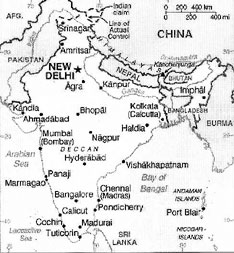



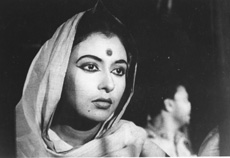
































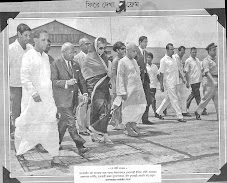



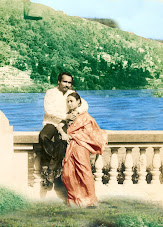






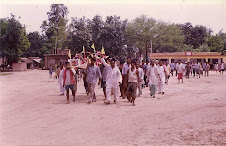

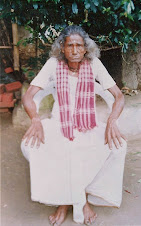
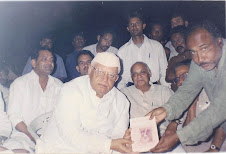
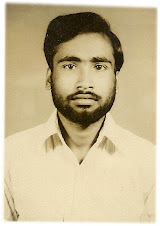



No comments:
Post a Comment